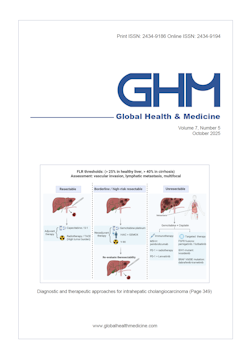Global Health & Medicine 2020;2(4):247-254.
Assessing the feasibility of introducing an electronic health information system into Tuberculosis clinics and laboratories in Myanmar
Miyazaki K, Nozaki I, Tojo B, Moji K
Myanmar has launched an advanced tuberculosis examination policy, which involves specimen exchanges among clinics and referral laboratories. However, with the current paper-based operation, it is difficult to trace information accurately. Therefore, since April 2017, we introduced a pilot operation consisting of an electronic health information system (HIS) that uses QR codes for data sharing in the tuberculosis laboratory at seven facilities. This study aimed to assess the feasibility of introducing the electronic HIS into tuberculosis clinics and laboratories based on staff perception, workload and workflow, and data accuracy, and to clarify its advantages and disadvantages. The analysis was descriptive, and it involved a semi-structured interview for the staff, workflow observations to evaluate the workload and describe the change in workflow, and evaluation of the data accuracy by comparing the numbers yielded by the paper-based and HIS-based reports. The HIS was positively accepted as it improved work efficiency, while the operation still depended on paper-based reports. Parallel data registration using both paper-based and HISbased reports increased the workload. Data discrepancies were found when comparing the paper-based and HIS-based reports, and these discrepancies were not directly attributed to the HIS introduction but individual factors. Crucial facilitating factors of the HIS were its operability and user-friendliness, because it does not require specific training. The additional workload translates into the need for additional human resources, and the parallel data registration remains a challenge. However, we consider that these challenges could be overcome as coverage of the HIS expands.
DOI: 10.35772/ghm.2020.01020







